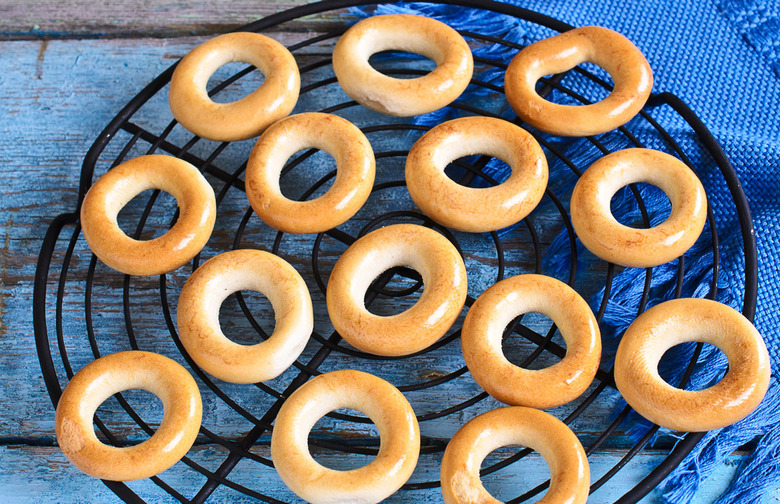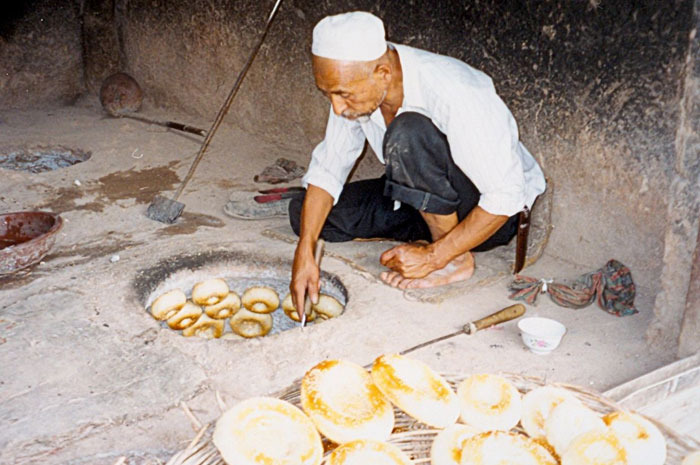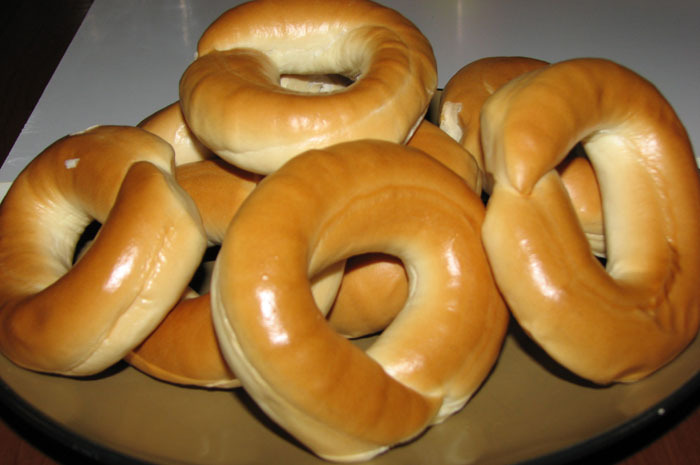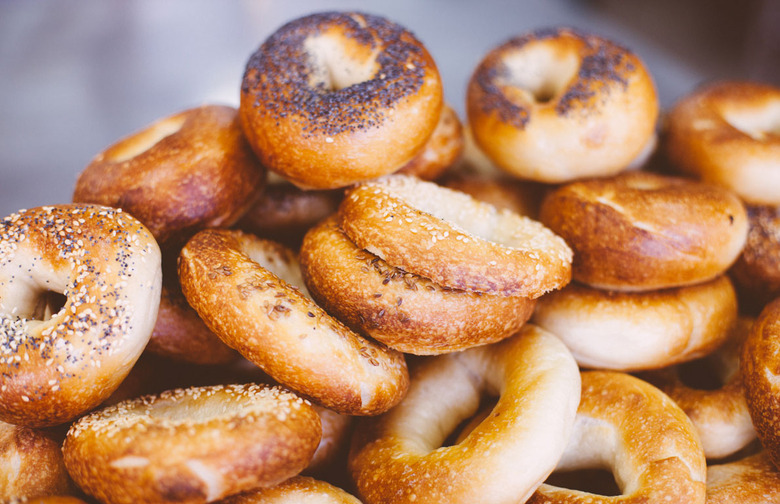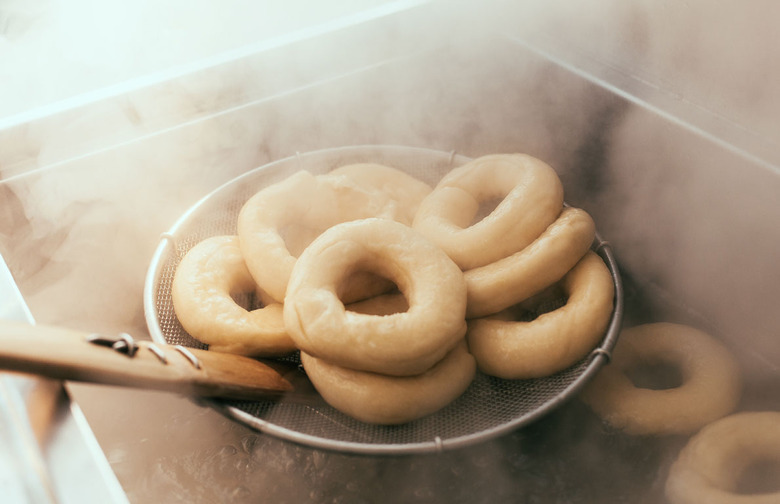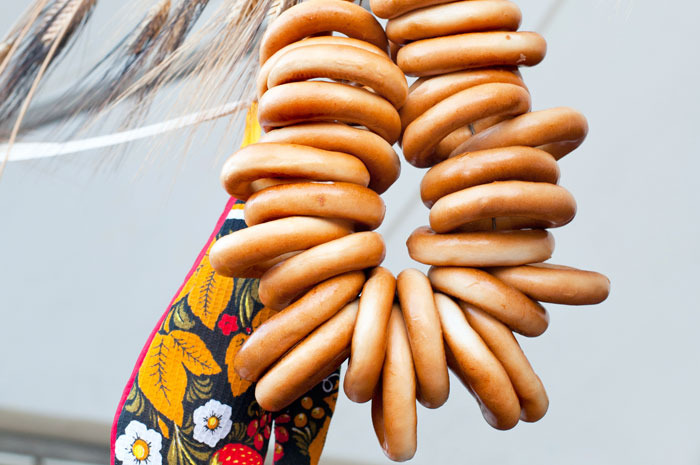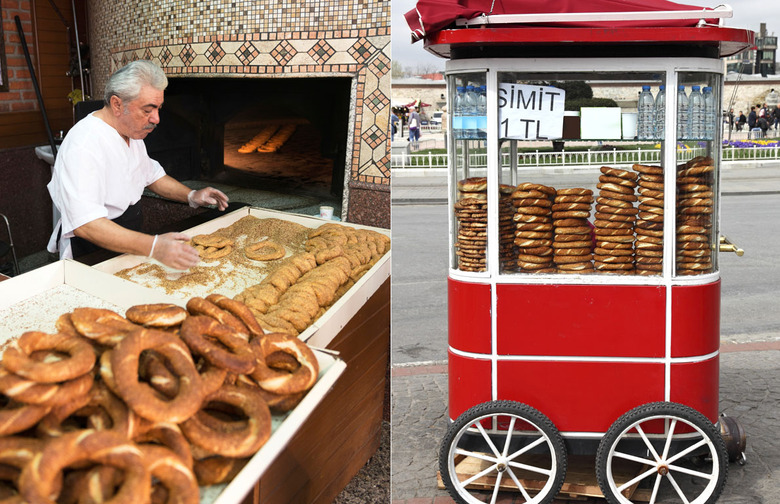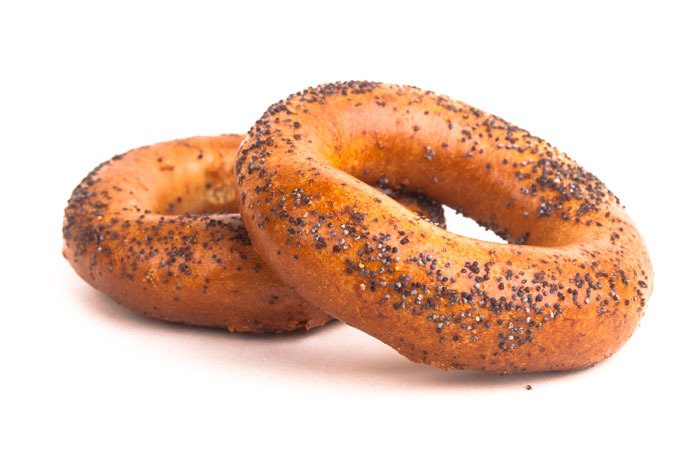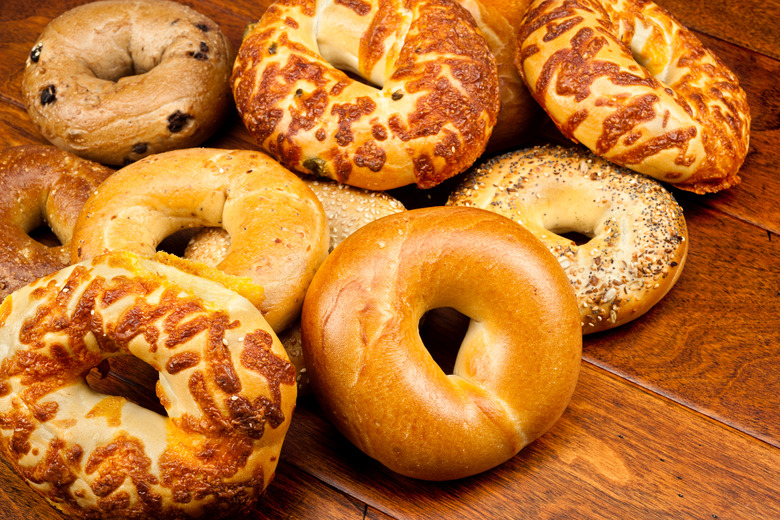Here's How Bagels Look Around The World
If you think there is only one kind of bagel, think again. The world of bagels stretches far beyond New York and Montreal; in fact, one of the first records of bagel-like breads dates back to 1593, hundreds of years before the United States was even a country. While varying in size, thickness, and texture, these "bagels," though they have different names, are unmistakably siblings of the popular breakfast bread we Americans know and love. Here are 9 different ways bagels look around the world.
Canada (Montreal-Style Bagel)
Montreal-style bagels are smaller, denser, and, as a result of being boiled in water infused with honey, sweeter than your standard New York bagel. They are always baked in a wood-fired oven. Try them at Montreal's famous St-Viateur, but don't ask for them to be sliced and spread with cream cheese. That's so New York. Try them plain and you won't regret it.
China (Girde Nan)
Girde nan is a bagel-like bread eaten in the Xinjiang province of western China, whose most predominant demographic is Uyghur Muslims. The region looks so similar to Afghanistan that the film The Kite Runner was shot there. Naturally, the culinary influences are different than what we picture when we think of Chinese food. Similar in size to a New York bagel but baked in a tandoori oven, girdeh nan seems like it has a hole, but a thin membrane of dough holds the circle together. You don't have to travel all the way west; try them at Nur Bostan Restaurant in Guangzhou, a halal eatery near that city's main mosque.
Finland (Vesirinkeli)
Vesirinkeli translates to "water ring," and, like bagels, they are boiled in water before being baked. These Finnish specialties are very similar to generic bagels, except their holes are a bit wider (New York bagels have more of a puncture), and toasted and buttered is the default, not a request. You're more likely to find them in a supermarket than see a store dedicated to them, so pick them up at the local K-Market if you're curious.
Israel (Jerusalem Bagel)
Jerusalem bagels are oblong, not round; baked without boiling; and almost always topped with sesame seeds. Forget cream cheese; you want to dip these in za'atar. While they are a common street food in Jerusalem, they're nearly impossible to find in the United States. However, New Yorkers need not worry: Bar Bolonat in the West Village serves them.
Japan (Green Tea Bagel)
We're used to the idea of green tea doughnuts at this point, but green tea bagels? Not so much. However, they are a huge hit in Japan, especially when topped with a sizeable dollop of red bean paste. Try them in the Japanese city of Uji, which many call the green tea, or matcha, capital of the world. Surugaya is just one of the many places where you can get all things green tea.
Russia (Sushki)
Russian sushki are different from bagels (or Russian bubliks) in that they are a sweet, crunchy tea snack roughly the size of a child's bangle. They are boiled in sugar water and barely ever come with toppings, except for the occasional sprinkling of poppy seed. Most Russian and Ukrainian stores sell them by the bag; even the ones in Brooklyn, such as Net Cost in Sheepshead Bay.
Turkey (Simit)
Simits, also called "Turkish bagels," have many varieties of their own. For example, simits in Ankara are smaller and crispier than the ones in Istanbul. Simits are traditionally drunk with tea; simit carts and men carrying trays of simits on their heads are a common sight throughout the country. The first record of them is from 1593. Unlike bagels, they are not boiled in water, but dipped in water and molasses syrup before baking in the oven. People watch the process in Istanbul while eating simits from Simit Sarayı.
Ukraine (Bublik)
With a larger circumference and wider hole than bagels, bubliks can be found in the Ukraine, Russia, Belarus, Poland, and Lithuania. Their texture is denser and more chewy that that of American bagels, and because their ingredients include milk, butter, and egg whites, bubliks taste a little sweet. Savory versions swap the sugar for grated cheese and a few drops of onion juice. At local outdoor markets, you'll see them hanging by the dozen on a string, which is exactly where you should purchase them.
The United States (Bagel)
At last, the bagel Americans know and love. They are so popular around the world that cities like Paris and Kiev, which take a lot of pride in their breads and bubliks, have restaurants with titles like "New York Bagel Café." What makes the New York bagel stand out is variety: all the different choices, especially the "everything" topping that none of the other bagels on this list have, and all the different spreads, like cream cheese, lox, egg salad, and so on. New Yorkers shuddered when Ess-a-Bagel announced they would be closing their location on the corner of First Avenue and 21st Street, but, luckily, their uptown location is still up and running.

